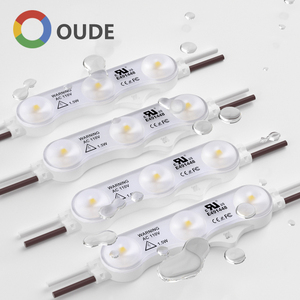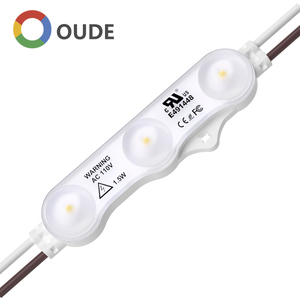(620 products available)





































































































































































 Ready to Ship
Ready to Ship




























 Ready to Ship
Ready to Ship











1.5-volt LED lights are low-voltage light-emitting diodes powered by 1.5-volt batteries. They are commonly used in various applications, such as flashlights, remote controls, and some electronic devices. The key feature of 1.5-volt LED lights is their ability to provide illumination while consuming very little power, making them energy-efficient and suitable for long battery life.
1.5-volt AA LED lights
1.5-volt AA LED lights are a type of LED light that uses AA batteries as power sources. These LED lights offer several advantages over traditional lighting technologies. First and foremost, they are energy efficient. AA battery-operated LED lights consume less power than conventional LED lights, extending battery life and reducing waste. The longer battery life means users won't have to replace or recharge their batteries as frequently, saving money and being more environmentally friendly.
1.5-volt AAA LED lights
1.5-volt AAA LED lights are a type of LED light that uses AAA batteries as power sources. Similar to AA LED lights, AAA LED lights are energy-efficient and have a variety of applications, including flashlights, remote controls, and other electronic devices. The key feature of 1.5-volt AAA LED lights is their ability to provide illumination while consuming very little power, making them energy-efficient and suitable for long battery life.
1.5-volt button cell LED lights
1.5-volt button cell LED lights are a type of LED light that uses button cell batteries as power sources. Button cell batteries, also known as coin cell batteries, are small, round, and flat batteries commonly used in devices like watches, calculators, and some remote controls. Because these button cell batteries are small and flat, they can be used in applications where space is limited and where their small size is an advantage.
1.5-volt LED lights come with different specifications depending on the intended use. Here are some of them:
Voltage
These types of LED lights operate on 1.5 volts. They are mostly used as low-level indicators or as part of larger LED arrays.
Current
1.5-volt LED lights usually have a current rating of 20mA or lower. This is the standard for most small signal LEDs. Lower currents produce less light but extend battery life in low-power applications.
Brightness
Brightness levels are measured in millicandela (mcd) for 1.5-volt LED lights. They range from a few hundred mcd to tens of thousands mcd. Lower levels are suitable for indicators, while higher levels provide general lighting.
Color
These types of lights are available in different colors. That includes red, green, blue, white, and yellow. LEDs with colored chips emit light in that specific color. Bi-color or tri-color LEDs combine chips to produce multiple colors.
Size
1.5-volt LEDs come in various sizes, measured in millimeters. Common dimensions include 3mm, 5mm, 8mm, and 10mm. Larger LEDs emit brighter light and are visible from further away. Smaller ones are suitable for compact devices where space is limited.
Lens Angle
These types of LED lights have varying lens angles that affect how widely the emitted light spreads. They are measured in degrees. Common angles include 30° (narrow), 60° (medium), and 90° (wide). A wider lens angle is suitable for tasks requiring illumination over a broader area.
Housing
The 1.5-volt LED lights have different housing materials that affect durability and environmental resistance. Common options include plastic (cost-effective, but limited lifespan) and aluminum (robust and long-lasting). Specialized housings made from weather-resistant materials are suitable for outdoor use.
Service Life
1.5-volt LEDs typically last between 30,000 and 50,000 hours. This is significantly longer than regular light bulbs, which usually last around 1,000 hours. However, brightness may gradually decrease over time.
1.5-volt LED lights require minimal maintenance. However, to keep them functioning properly, here are some maintenance tips.
Power Supply
Ensure that the LED lights are connected to a compatible power source. When using batteries, check their charge level regularly and replace them when depleted. Avoid overcharging rechargeable batteries, as this can damage them and affect the LED's performance.
Cleanliness
Dust and dirt can accumulate on the LED lights over time, reducing their brightness. Wipe them clean with a soft, dry cloth. For stubborn stains, slightly dampen the cloth with water. Avoid using harsh chemicals or abrasive materials, as they can damage the LED lights.
Temperature Control
LED lights are sensitive to extreme temperatures. Avoid placing them near heat sources, such as radiators or stoves. Prolonged exposure to high temperatures can affect their performance and lifespan. Also, protect the LED lights from freezing conditions, as this can lead to reduced brightness.
Physical Protection
1.5-volt LED lights are relatively durable. However, they can get damaged through rough handling or accidents. Handle them carefully to avoid breakage. Ensure they are appropriately installed and secure to prevent falling or getting knocked over.
Usage Guidelines
Follow the manufacturer's instructions on using and maintaining the LED lights. Avoid overloading them by connecting too many LEDs in parallel or series beyond the specified limits. Also, avoid prolonged use at maximum brightness, as this can lead to overheating and reduce their lifespan.
When selecting the right 1.5-volt LED lights for a project or application, consider the following factors:
Voltage and Current Requirements
Ensure that the power source matches the LED voltage requirements. For example, if the LED requires 1.5 volts and 20 milliamperes of current, connect it to a 1.5-volt power source and a circuit that provides 20 milliamperes of current.
Brightness
Consider the desired brightness level for the application. Higher-brightness LEDs may be needed for tasks requiring more light, while lower-brightness LEDs may suffice in areas with ambient lighting.
LED Type and Size
Different types and sizes of 1.5-volt LEDs are available, each suited for specific applications. For example, through-hole LEDs are commonly used in hobby projects and electronics, while surface-mounted LEDs are used in compact and modern designs.
Color Temperature and Color
Consider the color and color temperature of the LEDs to match the application's aesthetic and functional requirements. LEDs are available in various colors, including red, green, blue, yellow, and white (warm, cool, or daylight).
Viewing Angle
LEDs have different viewing angles that affect the light spread. Consider the viewing angle to ensure the light coverage suits the application's requirements.
Quality and Reliability
Choose high-quality and reliable 1.5-volt LED lights from reputable manufacturers to ensure consistent performance and longevity.
Heat Dissipation
Consider heat dissipation requirements, especially for high-power LEDs. Ensure adequate ventilation or heat sinks are available to prevent overheating.
Replacing and installing 1.5-volt LED lights is relatively easy. Here is a simple step-by-step guide.
Q1: What Are 1.5 Volt LED Lights Used For?
A1: 1.5-volt LED lights are used for various applications, including household items, toys, remote controls, flashlights, and low-power electronic devices that require low-light output.
Q2: How Long Do 1.5 Volt LED Lights Last?
A2: The lifespan of 1.5-volt LED lights can vary depending on usage and factors such as temperature and humidity. However, they are generally designed to last longer than traditional light sources.
Q3: Can I Use Rechargeable Batteries for 1.5 Volt LED Lights?
A3: Yes, rechargeable batteries such as NiMH (Nickel-Metal Hydride) batteries that provide 1.2 volts per cell can be used for 1.5-volt LED lights. They may require slight adjustments or changes in circuitry.
Q4: Are 1.5 Volt LED Lights Energy Efficient?
A4: Yes, 1.5-volt LED lights are energy-efficient. They consume less energy than traditional light sources, have longer lifespans, and reduce the need for frequent battery replacements.
Q5: Can I Connect Multiple 1.5 Volt LED Lights in Series?
A5: Yes, 1.5-volt LED lights can be connected in series. However, the total voltage requirement must be considered, and batteries with sufficient voltage should be used.